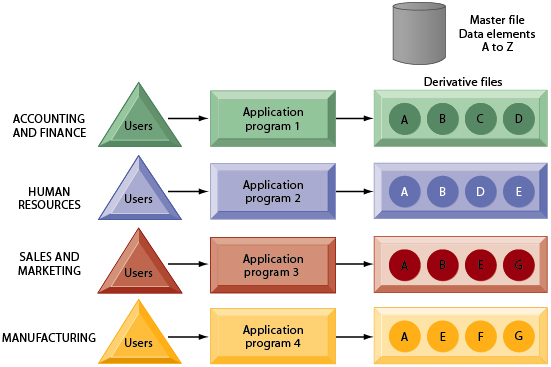| Section 6.1: Bullet Text Study Guide |
Organizing Data in a Traditional File Environment
Computer systems organize data in a hierarchy that begins with bits and bytes and progresses to more complex groupings of data:
- Fields: Group of characters, words, or a complete number
- Records: Group of related fields, describes an entity (a person, place or thing about which information must be kept - each characteristic of an entity is an attribute
- File: Group of records of the same type
- Database: Group of related files
Figure 6-1
 |
A computer system organizes data in a hierarchy that starts with the bit, which represents either a 0 or a 1. Bits can be grouped to form a byte to represent one character, number, or symbol. Bytes can be grouped to form a field, and related fields can be grouped to form a record. Related records can be collected to form a file, and related files can be organized into a database. |
In most organizations, the traditional approach to information processing meant that databases and other systems tended to grow independently without a company-wide plan. Accounting, finance, manufacturing, human resources, and sales and marketing all developed their own systems and data files.
Figure 6-2
 |
|
Problems resulting from the traditional file environment include:
- Data redundancy: duplicate data in multiple files, leading to data inconsistency, different values used for the same attribute
- Program-data dependency: Changes in programs requiring changes to the data
- Lack of flexibility
- Poor security
- Lack of data sharing